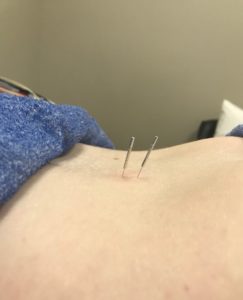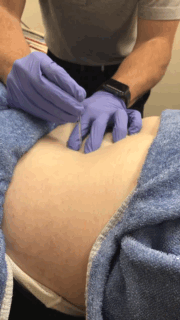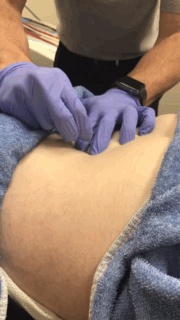Dry needling is a type of therapeutic technique. A specially trained physical therapist will insert small, thin needles into myofascial trigger points on the body, as shown in the videos below. If this sounds scary to you, fear not! The process is not as painful as it sounds. Generally, the needle insertion is painless. What can sometimes be felt is a small twitch response. This response is your brain sending impulses to the trigger point. The feeling is more like a shock or cramping sensation than pain. An added bonus is the release of endorphins and other hormones that help to reduce pain and relax your mind and body. Still, you may be wondering why anyone would choose this type of treatment for their condition.
There are many benefits to dry needling, which is why it may be recommended by your doctor or therapist. The stimulation of blood flow that occurs when the needle is inserted stimulates your body’s natural healing process. Patients who have been through a number of dry needling sessions will see an improvement in their range of motion and joint mobility. A lot of athletes have turned to dry needles to improve and maximize their performances, as have patients who have suffered a reduction in mobility through injury. Dry needling can also reduce myofascial pain.
Dry needling can help treat a wide range of injuries and conditions. Some of the more common ones include tendonitis, plantar fasciitis, headaches, and back or spine problems. In addition, it speeds up the recovery process by releasing muscle tightness and reducing inflammation. There is not a set number of treatments required to improve each condition. Everyone will have a different experience because our injuries are specific to our own bodies. It is common to notice a small change after the first session, and within 3-4 sessions you should know if the treatment is right for you.

Post written by: Casey Badder, DPT


